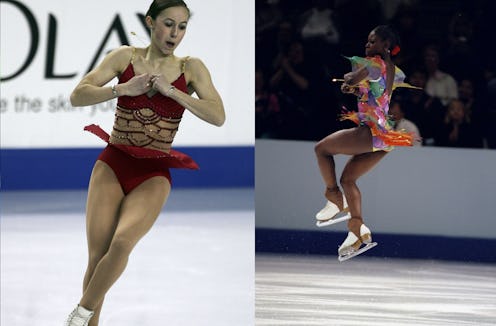Life
This Is How Figure Skaters Actually Pull Off Their Amazing Tricks

When you think of a physicist, what comes to mind? A lot of people picture Albert Einstein at a chalkboard solving equations, but what if I told you physicists also wear bedazzled costumes and do tricks on ice skates? While they may not have a PhD in physics, Olympic figure skating athletes constantly leverage the laws of nature to pull off mind-blowing tricks (and impress the judges). Figure skating requires its athletes to deeply understand the laws of physics — and use them to their advantage in seemingly impossible ways.
James Richards is a professor of kinesiology and applied physiology at the University of Delaware and has worked with Olympic figure skaters and their coaches to improve their jump techniques. Richards explained to Smithsonian Magazine how physics can aid in a figure skater’s Olympic training. “It amounts to three components: how much angular momentum do you leave the ice with, how small can you make your moment of inertia in the air, and how much time you can spend in the air.” He continued, “What’s shocking is how little it takes to make a huge difference. You move your arms three or four degrees, and it increases the spin rate quite a bit.” Nevermind making these calculations in your head while in a sparkly leotard in front of thousands of fans.
And while most physicists’ equations are limited to doing lots of math on a TI calculator, figure skaters must also apply their knowledge using their bodies — and a whole lot of practice. Figure skaters first think through how their bodies will move on blade and ice while firmly on dry land. In a video posted by The Players' Tribune, American figure skater Mirai Nagasu demonstrated how she practices landing the triple axel — a jump that involves three and a half rotations in the air — using a device called the Champion Skating Harness.
The video is not for those prone to dizziness — you see Nagasu suspended in a bungee-like harness, spinning on a disk, and then suddenly she is lifted into the air by the harness, as if being belayed down a rock wall, while still spinning. Darlene Parent, a figure skating coach, spoke about the Champion Skating Harness to SELF, saying, “This device helps skaters learn how to pull in and tighten their bodies more quickly so they can rotate faster when they’re in the air. It acts as a centrifugal force.” The harness is a safe way for skaters to build muscle memory before they attempt the difficult stunt on the ice.
The reason this trick is so difficult to pull off (and requires this incredibly specific coaching) is because it literally defies the laws of physics. Jimmy Morgan, a U.S. pairs figure skater and coach, explained to Vox, “The skater needs an extra half rotation to land gliding backward. The extra half rotation is notable because it’s much more difficult to create rotation when taking off from a forward edge.”
Skaters train hard to perfect the triple Axel, but Richards told Wired that physics has its limits. While completing the triple Axel, skaters rotate three and a half times, and Richards doubts skaters can up that number to five. "I really don't think a quint is possible," he said. "On the quad, we see the arms coming almost right in against the body which means they're maxing out their in-air position. So there's really no way for them to get tighter to spin faster."
Even with this dedicated training, and understanding of what it physically takes to pull off a figure skating trick, it's still incredibly common for athletes to stumble while on the ice — in front of the entire world. With the high speeds, cold temperatures, and sharp blades present, falling can be not only embarrassing, but incredibly dangerous: a viral Tweet circulating ahead of the Olympics noted how French figure skater's Surya Bonaly's successful (and iconic) one-bladed backflip at the Winter 1998 Olympics in Nagano, Japan, flouted the Olympics' de facto ban on backflips and was still declared illegal because of how risky the move was. Despite the risks, figure skaters embody one of the most important lessons of the Olympics: as Michelle Kwan told TIME in 2017, “You fall every day, whether it’s in a job, or you miss something else, but you learn how to do it better next time. You learn it in sports. That’s a life lesson.”
Luckily for the fans of Olympic figure skating, you don’t have to understand physics to admire these incredible athletes. So as you’re watching these athletes take to the ice in PyeongChang, remember the intense preparation that goes into those breathtaking routines.